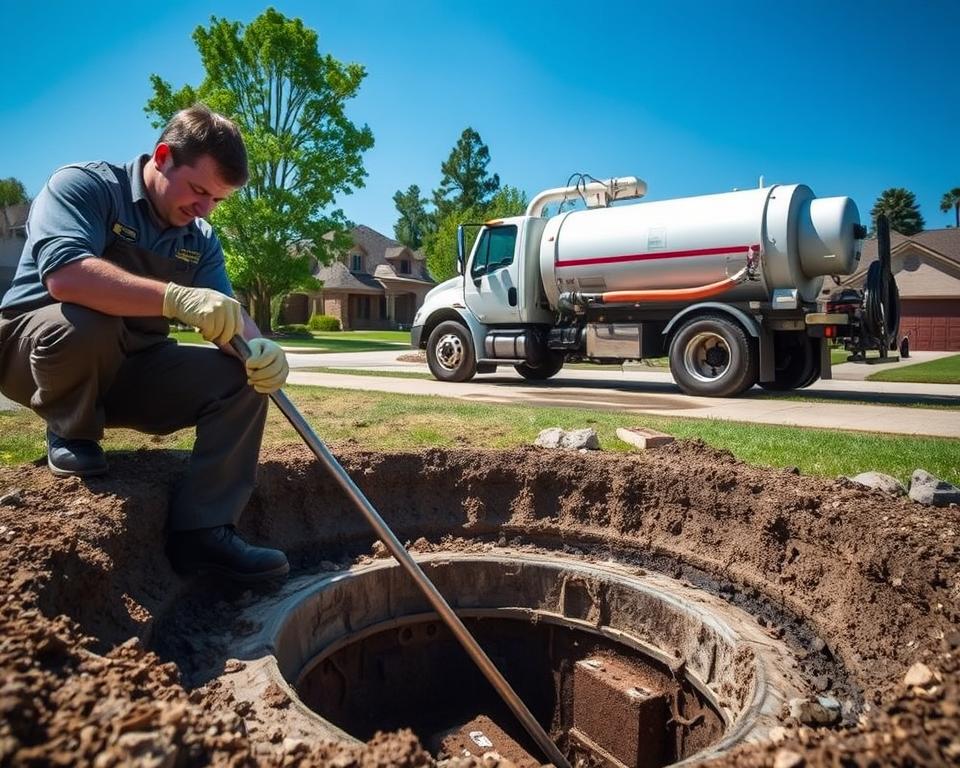The Definitive Guide to FTTH cable Production Line
You’ve arrived at the definitive guide for the FTTH cable production line. Within this comprehensive article, we will examine fiber optic cables and their indispensable role in allowing high-speed data transmission. The continuous growth in demand for faster and more reliable internet connectivity makes it essential to understand the details of FTTH cable production. You will gain valuable insights into the production of FTTH cable production line through this guide, which ranges from the basics of cable infrastructure to the sequential manufacturing process.
This guide is designed for everyone, whether you’re new to the field or seeking to expand your knowledge. We will explore the key components of FTTH cable systems, the role of optical fibers in FTTH technology, and the process of transforming raw materials into high-quality fiber optic cables. We will also cover topics such as design considerations, stranding techniques, buffering and jacketing processes, and the efficient running of the FTTH cable production line.
We will also cover the advanced technologies that are revolutionizing FTTH cable manufacturing, as well as the crucial role of testing and quality assurance in ensuring the reliability and durability of fiber optic cables. This guide will also cover the concluding phases of packaging and distribution, ensuring the FTTH cable production line operates without interruption from start to finish.
Main Points:
- Providing high-speed data transmission is a key function of the FTTH cable production line.
- The fundamentals of FTTH cable infrastructure and its key components are crucial to understand.
- From silica to fiber, the step-by-step process of FTTH cable production involves fiber drawing, coating application, and testing.
- To optimize performance, it’s important to design configurations and layouts that meet specific network requirements.
- Support and protection for the fiber are provided by stranding techniques and central strength members.
Essential Concepts of FTTH cable Production
In order to understand the process of FTTH cable production, it is essential to have a clear understanding of the cable infrastructure, key components, and the role of optical fibers in FTTH technology.
Understanding the FTTH cable Infrastructure
The network of cables, connectors, and distribution points that facilitates data transmission in fiber-to-the-home (FTTH) systems is known as the FTTH cable infrastructure. It acts as the fundamental structure for high-speed internet connectivity, allowing for smooth data transfer from the provider’s network to the end user’s property.

Main Parts of FTTH cable Systems
The smooth and efficient transmission of data in FTTH cable systems is made possible by the interaction of several key components. These components include:
- These cables, known as fiber optic cables, carry data signals in the form of light. Ensuring fast and reliable data transmission, they are designed to provide high bandwidth and low signal loss.
- Connectors: Connectors play a crucial role in joining fiber optic cables to other cables or devices, facilitating the connection and disconnection of cables when necessary. They provide a secure and reliable connection, minimizing signal loss.
- Distribution points serve to divide and distribute fiber optic signals among multiple end users. Ensuring that each user gets the right amount of bandwidth without affecting the overall network performance is one of their functions.
Why Optical Fibers are Key to FTTH Technology
The most important part of FTTH technology is optical fibers. Designed to efficiently transmit data signals as light pulses, these thin strands are made of glass or plastic. Because of their high bandwidth capacity, low signal loss, and immunity to electromagnetic interference, optical fibers are perfect for high-speed data transmission.
Each fiber has a core that carries the light signals, and this core is encased in a cladding layer that reflects the light back into the core, preventing signal loss. Optical fibers can transmit data across vast distances without a decrease in signal quality or speed due to this design.
How FTTH cable is Made: From Silica to Fiber
Crafting the Fiber Core: An Explanation of Fiber Drawing
In the FTTH cable production process, the first step is fiber drawing, which involves crafting the core of the cable. This involves taking a glass preform made of silica and pulling and stretching it until it becomes a long, thin fiber. Careful control of the fiber’s diameter during fiber drawing is essential for optimal performance. How well and accurately the cable transmits data depends heavily on the quality and composition of its core.
Making Sure It Lasts: The Coating Application Process
Coating application is the step that follows fiber drawing. The fiber receives a protective layer, known as a coating, at this stage. As a buffer against external factors such as moisture, the coating serves several purposes, including enhancing the fiber’s long-term durability and reliability. Furthermore, the coating material is carefully chosen for its appropriate mechanical properties, ensuring the fiber stays intact and protected throughout its life.
Quality Assurance: Fiber Testing at All Stages
Fiber testing is carried out at various points during the FTTH cable production process to confirm the fiber’s quality and performance. Measurements of the fiber’s physical parameters, such as diameter, attenuation, and tensile strength, are taken during testing, along with inspections of the coating’s uniformity and adhesion. The overall quality and performance of the final FTTH cables are guaranteed by these crucial tests, which ensure the fiber meets the necessary standards and specifications.
| Production Stage |
Parameters Tested |
| Fiber Drawing |
Diameter, Attenuation, Tensile Strength |
| Coating Application |
Coating Thickness, Uniformity, Adhesion |
FTTH cable Production: Testing Parameters at Different Stages (Table)
The testing parameters measured at different stages of the FTTH cable production process are summarized in the table above. To ensure the high-performance and reliability of FTTH cable systems, manufacturers conduct rigorous testing to verify that every fiber used in the cables meets the required quality standards.
Design Considerations for FTTH cable Configurations
In the realm of fiber-to-the-home (FTTH) cable production, cable configuration design is key to fulfilling network requirements and optimizing performance. cable design involves considering factors such as network capacity, scalability, and the desired speed of data transmission. By adapting cable configurations to their unique needs, companies can guarantee efficient deployment and make the most of their network infrastructure.
FTTH cables offer a range of configurations and layouts, and each option comes with its own set of benefits and considerations:
- The Daisy Chain Configuration involves connecting each subscriber in a sequence to the main distribution point. It is a cost-effective solution suitable for areas with low subscriber density.
- A direct connection between each subscriber and the central office or hub is characteristic of the star configuration. This design offers flexibility and makes maintenance easy, which makes it great for areas with a lot of people.
- The ring configuration connects subscribers in a circular pattern. This configuration offers backup and can handle failures, so service isn’t interrupted if the network goes down.
- In a tree configuration, individual subscribers are connected to secondary distribution points, which are connected to the main distribution point. Network expansion is efficient with this configuration, and it’s commonly used in areas with a high number of subscribers.
- Mesh Configuration: The mesh configuration provides multiple connections between distribution points, offering high reliability and redundancy. Applications where uninterrupted service is absolutely necessary often use this configuration.
Considering the network requirements and how much growth is expected in the future is essential when designing FTTH cable configurations. Factors such as how many subscribers there are, the geographical area, and what services are required will determine which configuration is best, as each has its own advantages and limitations.
By carefully evaluating these factors and collaborating with industry experts, companies can develop customized FTTH cable configurations that meet their specific network requirements and deliver optimal performance.
Stranding: Techniques and Machinery
To ensure the strength and durability of FTTH cables, stranding techniques and equipment play a vital role in their production. There are different stranding patterns that can be used, and each one has its own benefits and is used for specific applications. For cable production that is both efficient and of high quality, it’s essential to choose the right stranding machinery. Additionally, central strength members provide additional support and protection for the fiber, contributing to the overall reliability of the FTTH cables.
A Look at Different Stranding Patterns
When producing FTTH cables, one of the main things to consider is which stranding pattern to use. Various stranding patterns, such as reverse concentric, SZ stranding, and helical stranding, are used depending on the desired characteristics of the cable. Each pattern offers unique features that can enhance the cable’s performance in terms of flexibility, strength, and resistance to external factors. Stranding patterns are carefully chosen to meet specific application requirements, ensuring optimal performance and longevity of the FTTH cables.
Factors to Consider When Choosing Stranding Machinery
The FTTH cable production line includes stranding machinery as a key element. By maintaining the required tension and alignment of the fibers, it makes it possible to precisely form the stranding pattern. When selecting the right Fibers in metal tube machinery, you need to consider things like the cable’s diameter, the speed of production, and the level of automation you need. Manufacturers can meet the demands of producing a lot of cables and also customize them thanks to the increased efficiency and flexibility offered by advanced stranding machines.
Why Central Strength Members are Important
FTTH cables use central strength members to make them mechanically stronger. Stability is provided, tensile strength is enhanced, and the delicate fiber inside the cable is protected by them. Typically made of materials like aramid or fiberglass, the central strength members act as a backbone, reinforcing the cable structure and offering resistance against external forces. Their presence ensures that the FTTH cables can withstand installation stresses and maintain signal transmission integrity, making them suitable for various deployment scenarios.
How Buffering and Jacketing Protect the Fiber
In the production of FTTH cables, the buffering and jacketing processes play a crucial role in protecting the delicate fiber inside. The fiber is shielded from a variety of potential threats, including moisture, abrasion, and other external factors that could negatively impact its performance and lifespan, thanks to these processes.
The Buffering Process and Its Importance
A protective layer is applied around the fiber during the buffering process, which acts as a barrier against things in the environment. By preventing water from penetrating, this layer can stop signal loss or even the fiber from breaking. Buffering also enhances how well the cable resists abrasion, which means there’s less chance of damage when it’s being put in or looked after.
The buffering materials used must exhibit excellent adhesion to the fiber and possess a low coefficient of friction to minimize stress on the fiber. The selection of the appropriate buffering material depends on factors such as the environmental conditions the cable will be subjected to and the desired level of protection.
How to Select Jacketing Materials
The process of putting an outer layer on to further protect the fiber and the buffering materials is known as jacketing. Careful selection of the jacketing material ensures strong protection against mechanical stress, impact, UV radiation, and other potential hazards.
Things like flexibility, how well it resists fire, and its compatibility with the environment are all factors that are considered when choosing jacketing materials. Materials such as polyethylene (PE), polyvinyl chloride (PVC), and low-smoke zero-halogen (LSZH) compounds are commonly used for jacketing. Because each material has its own advantages and disadvantages, the choice will depend on the specific application and what the industry standards are.
How Latest Jacketing Technologies are Applied
Jacketing technologies have come a long way, and these advancements have completely changed how FTTH cables are protected. The newest technologies offer improved strength, greater flexibility, and better resistance to environmental factors, leading to enhanced durability and reliability.
Each fiber in tight-buffered cables, an innovative jacketing technology, is individually buffered with a thin layer of plastic, offering excellent protection and flexibility. Using strong tubing to hold multiple fibers is what micro-ducts do, and this technology offers high density and makes cable installation versatile.
Specialized jacketing technologies have also been developed to meet the unique requirements of various industries. For example, cables that are used outside in tough conditions might have armored jackets to give them better protection from rodents, moisture, and very hot or cold temperatures.
By leveraging the latest jacketing technologies, FTTH cables can be customized to meet the demands of various applications, ensuring optimal performance, longevity, and reliability.
The Workings of the FTTH cable Production Line
The FTTH cable production line relies on efficient operations to ensure a smooth and streamlined manufacturing process. High-quality fiber optic cables that enable high-speed internet connectivity are produced through each step in the production line playing a vital role. Various machines and equipment are used to achieve the best possible efficiency.
Preparation of raw materials, including the silica for fiber drawing, is the initial stage of the manufacturing process. Next, the fiber drawing process begins, and this is where the cable’s core is carefully made to meet the required specifications. Coating application is the next stage, and it ensures the fiber is durable and protected.
To make sure the cables meet the highest standards, quality is the most important thing, and thorough fiber testing is done at every step of the production line. This includes testing for factors like attenuation, bandwidth, and signal loss.
Efficiency is critical in FTTH cable production line operations. Optimizing the use of machinery and equipment allows manufacturers to reduce production time and costs and increase the amount they produce. Also, when the processes are efficient, the cables are of better quality overall.
It can be complex to manufacture these cables, as the process involves many different stages and components. However, by integrating efficient operations and continuous improvement initiatives, manufacturers can improve the efficiency and effectiveness of their FTTH cable production line.
The following table summarizes the key machinery used in the FTTH cable production line and what each machine does in the manufacturing process, to give you a complete understanding of how it all works:
| Machine |
Role |
| Fiber Drawing Machine |
Produces the fiber optic cable core by pulling and stretching the silica material. |
| Coating Machine |
Applies a protective coating to the fiber optic cable, ensuring durability and resistance to external factors. |
| Fiber Testing Equipment |
Conducts various tests on the fiber optic cable to ensure quality and performance. |
| Spooling Machine |
Winds the finished fiber optic cable onto spools for packaging and distribution. |
| Jacketing Machine |
Applies an outer jacket to the fiber optic cable, providing additional protection and improving its handling. |
By using advanced machinery and technologies, manufacturers can make their production line operations more efficient, improve their effectiveness, and deliver high-quality FTTH cables that satisfy the growing need for high-speed internet connectivity.
Advanced Technologies in FTTH cable Manufacturing
Efficiency and quality in the constantly evolving field of FTTH (Fiber to the Home) cable manufacturing are greatly improved by advanced technologies. The growing need for high-speed data transmission has led to automation, the integration of AI, and the use of fiber coloring machines, which have completely changed the production process, fostered innovation, and resulted in better products.
How Automation is Used in Fiber Optic cable Production
Manufacturing of fiber optic cables has been greatly changed by automation. With advanced machinery and robotics, the manufacturing process can be controlled with great precision, ensuring consistent quality and minimizing errors. Because of this automation, more cables can be produced faster and with better accuracy, which ultimately saves money and makes customers happier.
The Role of AI in Ensuring Quality
By integrating artificial intelligence (AI) into the quality control process, FTTH cable manufacturers can achieve unprecedented levels of accuracy and reliability. As production data is generated, AI algorithms can analyze it in real-time, identifying any changes or irregularities that could affect the quality of the cables. This way of checking quality helps to reduce mistakes, make production more efficient, and ensure that only the best FTTH cables are sold.
How Fiber Coloring Machines Work
FTTH cable manufacturing has been completely changed by the introduction of fiber coloring machines, which offer better ways to customize the cables. With fiber coloring machines, optical fiber strands can be color-coded, which makes it easy to identify them and manage the cables efficiently during installation and maintenance. This technology gets rid of the need to color-code by hand, which reduces the possibility of errors and makes the whole process of deploying cables more efficient.
Ensuring Quality: Testing and Quality Assurance in Fiber Optics
For fiber optics, it’s extremely important to make sure the quality is as high as possible. This is achieved by using thorough testing and quality assurance methods throughout the entire production process. Standardized testing protocols play a crucial role in guaranteeing the reliability and consistency of fiber optic cables.
How Standardized Testing Protocols are Implemented
Every fiber optic cable is guaranteed to meet the required quality standards through the establishment of standardized testing protocols. These protocols detail the specific testing procedures and criteria that must be followed at each stage of the production process. Manufacturers can find and fix any problems by following these protocols, which ensures that customers only receive the best quality cables.
How OTDR is Used for Quality Checks
Optical Time-Domain Reflectometer (OTDR) is an essential tool for checking the quality of fiber optic cables. OTDR is a testing instrument that utilizes light pulses to measure the loss and reflectance along the length of an optical fiber. By analyzing the OTDR traces, technicians can detect issues such as fiber bending, signal loss, or connector damage. Finding the exact location of any problems and taking steps to fix them is made possible, which ensures the cable’s overall quality and performance.
How to Maintain High Quality Assurance Standards
To ensure fiber optic cables perform consistently and reliably, quality assurance standards are maintained throughout the entire production process. Various aspects are covered by these standards, including the selection of materials, the manufacturing processes used, and the testing of the final product. By following these strict standards, manufacturers can guarantee that their products achieve the highest levels of quality and performance that the industry demands.
The Last Steps: Packaging and Distribution of FTTH cables
The last steps in the production of compact fiber unit, which are packaging and distribution, are the focus of this section. Ensuring that the cables are packaged correctly and efficiently after they have gone through the various manufacturing processes is crucial for their deployment and installation in the field. In addition, using packaging that protects them is crucial for keeping the delicate fiber optic cables safe during transportation and storage. For FTTH products to be delivered to customers on time and effectively meet their connectivity needs, efficient logistics and supply chain management are crucial.
Best Practices for cable Spooling
For FTTH cables to be installed smoothly and easily, efficient techniques for spooling them are vital. The risk of cables getting tangled or damaged is reduced by using cable spools, which offer a practical and organized way to store and transport them. cable installers can save time and effort when deploying cables by using the best cable spooling techniques. Cables that are spooled correctly make the installation look better overall, ensuring it’s neat and professional.
Packaging Solutions for Safeguarding Fiber Optic cables
The delicate fiber optic cables need to be protected during transportation and storage, and this requires the implementation of effective protective packaging solutions. The packaging should provide cushioning, absorb shocks, and resist external factors such as moisture, dust, and physical impact. The use of high-quality packaging materials and techniques ensures that the fiber optic cables will arrive at their destination in optimal condition, ready to be installed by manufacturers. This not only safeguards the integrity of the cables but also enhances customer satisfaction by minimizing the risk of damage or performance degradation.
Best Practices for FTTH Product Logistics and Supply Chain
Efficient logistics and supply chain management are crucial for the successful delivery of FTTH products to customers. This includes making careful plans for how the cables will be transported, stored, and distributed to ensure they arrive when they should and are reliable. With effective supply chain management, delays are minimized, the flow of products is optimized, costs are reduced, and customer service is enhanced.
Conclusion
In conclusion, the ultimate guide to FTTH cable production line has provided a comprehensive overview of the process involved in manufacturing fiber optic cables for high-speed internet connectivity. Throughout this article, we have emphasized how important the FTTH cable production line is for making fast and reliable data transmission possible.
Fiber optic cables play a critical role in facilitating high-speed internet connectivity, allowing for seamless communication, streaming, and online activities. This process, which goes step by step from fiber drawing to buffering and jacketing, ensures that FTTH cables are durable and of high quality.
Technologies like automation and AI integration, which are advanced, have completely changed the manufacturing process, leading to increased efficiency and accuracy. The reliability and performance of fiber optics are ensured by having standardized testing protocols and strict quality assurance standards in place.
The last steps in FTTH cable production are packaging and distribution, which make sure these important cables are deployed efficiently and protected while being transported. Meeting the increasing global demand for high-speed internet connectivity relies on the expertise and precision involved in the FTTH cable production line.










